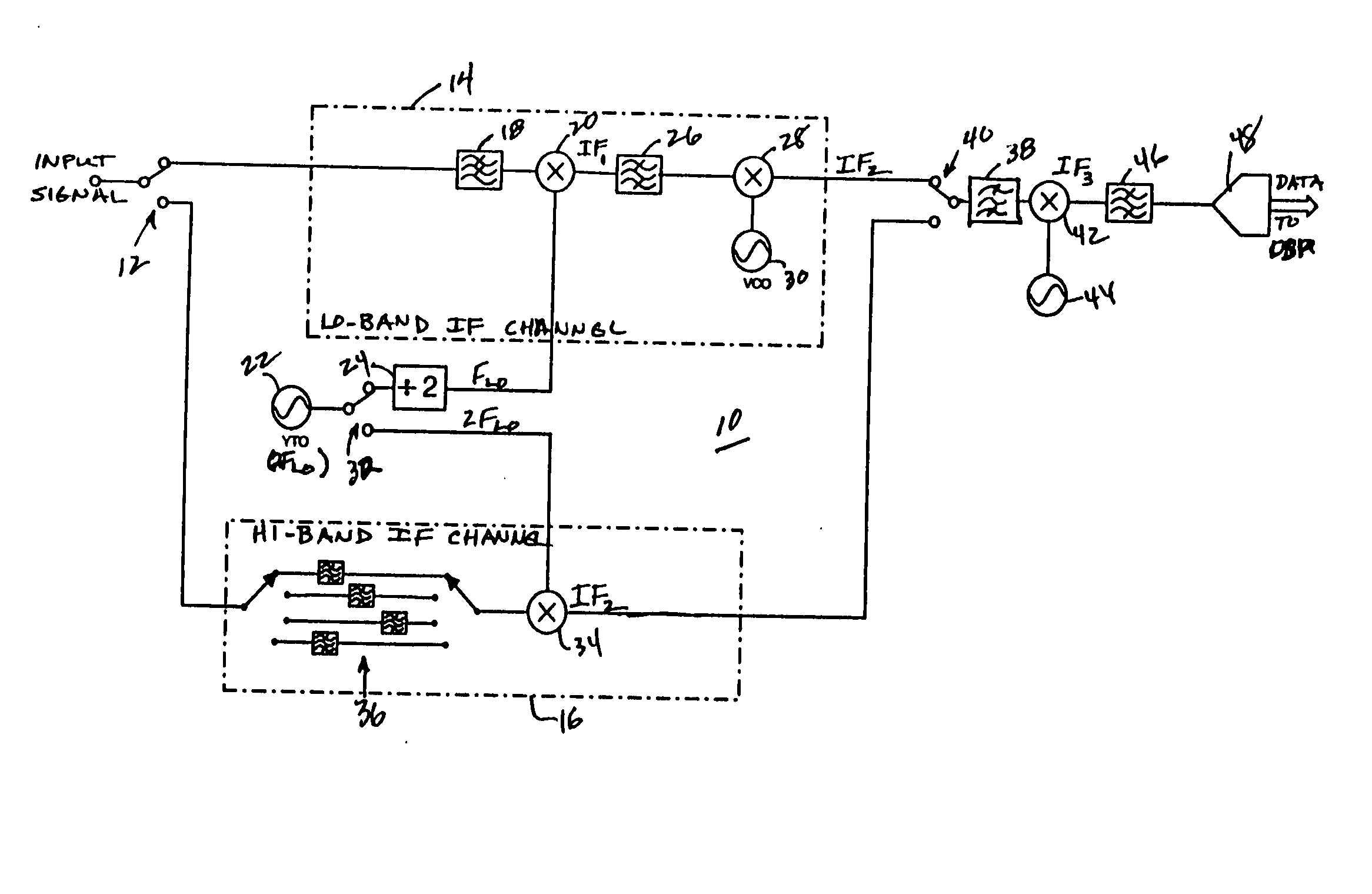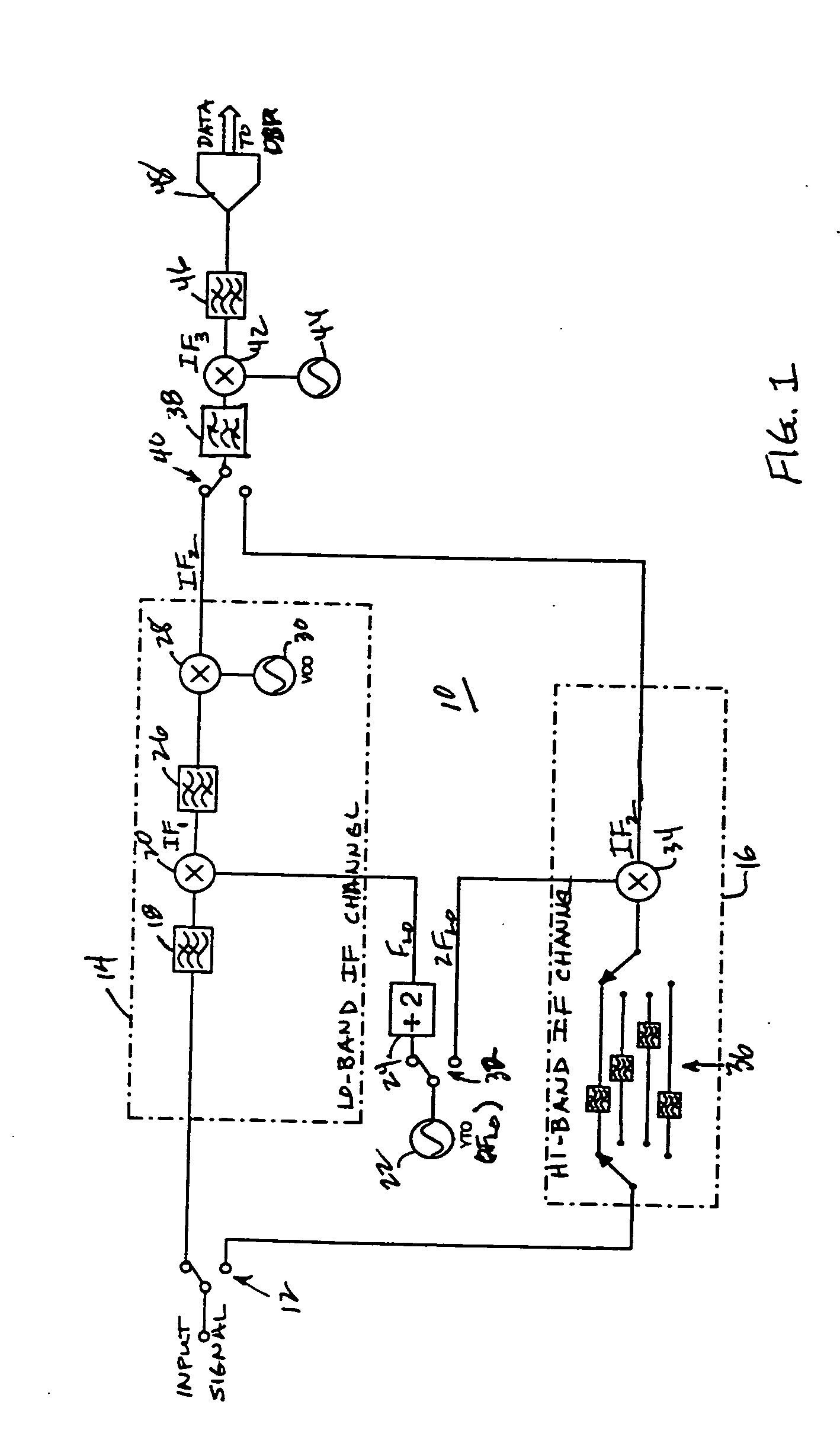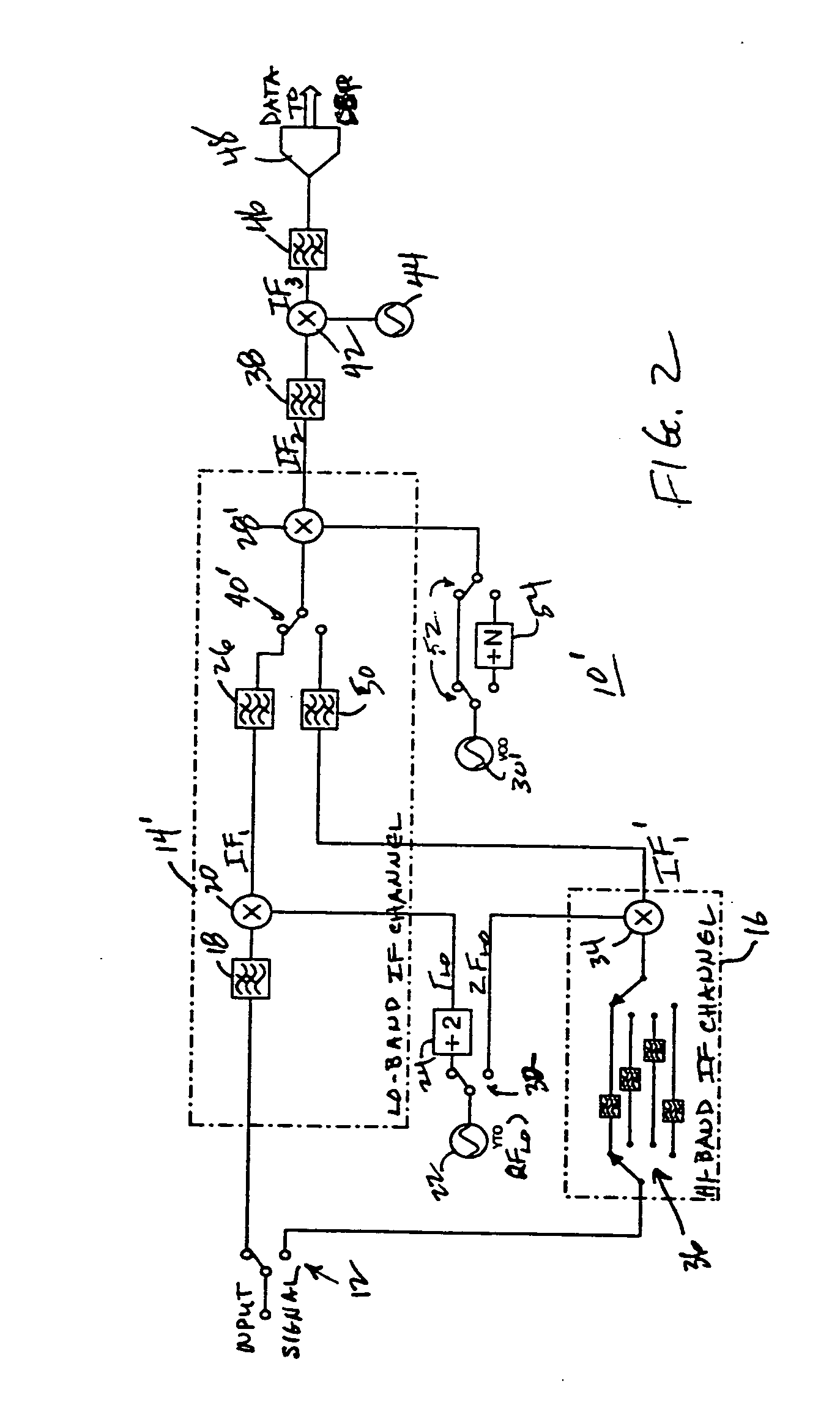Use of a preselection filter bank and switched local oscillator counter in an instrumentation receiver
a preselection filter and instrumentation receiver technology, applied in the field ofspectrum analysis, can solve the problems of high cost and limited bandwidth of y
- Summary
- Abstract
- Description
- Claims
- Application Information
AI Technical Summary
Benefits of technology
Problems solved by technology
Method used
Image
Examples
Embodiment Construction
[0009] Referring now to FIG. 1 an instrumentation receiver 10 receives an input signal and directs it via an input switch 12 to either a baseband (low frequency band) intermediate frequency (IF) channel 14 or a high frequency band IF channel 16. At the input to the lo-band IF channel 14 is a lowpass filter 18, the output of which is input to a first mixer stage 20. A YIG tuned oscillator (YTO) 22 having a tunable frequency output is input to a counter / divider 24, which for this example is a divide-by-two counter although generally any integer divisor may be used. The particular divisor used is a function of the relationship between the low frequency band IF and the high frequency band IF. The output from the counter / divider 24 is input to the first mixer stage 20, the output of which is a first intermediate frequency (IF1) signal up converted from the input signal. A first bandpass filter 26 acts as an anti-aliasing filter for the IF1 signal which is then input to a second mixing st...
PUM
 Login to View More
Login to View More Abstract
Description
Claims
Application Information
 Login to View More
Login to View More - R&D
- Intellectual Property
- Life Sciences
- Materials
- Tech Scout
- Unparalleled Data Quality
- Higher Quality Content
- 60% Fewer Hallucinations
Browse by: Latest US Patents, China's latest patents, Technical Efficacy Thesaurus, Application Domain, Technology Topic, Popular Technical Reports.
© 2025 PatSnap. All rights reserved.Legal|Privacy policy|Modern Slavery Act Transparency Statement|Sitemap|About US| Contact US: help@patsnap.com



